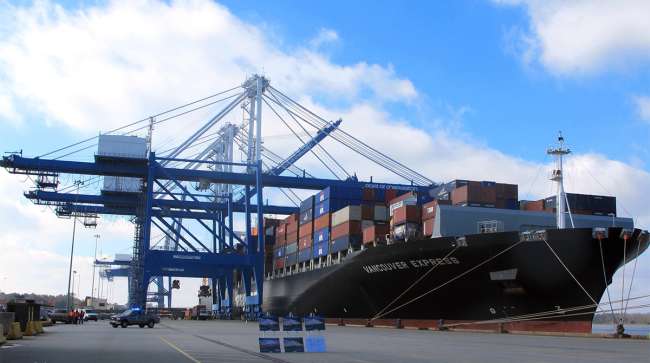Staff Reporter
Charleston Bridge Closure Stymies Freight, Passenger Traffic

An emergency interstate bridge closure in Charleston, S.C., has snarled passenger and freight traffic around the area, which is home to the state’s most prominent port.
The South Carolina Department of Transportation closed the westbound portion of the Interstate 526 bridge over the Wando River on May 14 after agency officials discovered a broken cable within the bridge’s structure. I-526 forms nearly a complete loop around Charleston, and the bridge over the Wando River forms a direct link to the Wando Welch Terminal, the port’s largest terminal in terms of volume and physical size.
The bridge is a vital conduit for truckers hauling everything from chemicals and rubber to forest products, according to South Carolina Trucking Association President Rick Todd. He said the closure has resulted in a significant loss of productivity, especially for truckers stuck in afternoon rush hour traffic.
Two-way traffic times are as anticipated on I-526 over the Wando River so far this morning. Heavy congestion with average speeds at 15 mph. Please consider alternate routes. pic.twitter.com/EmEym1Napo
— SCDOT (@SCDOTPress) May 22, 2018
“It’s a major disruption. A lot of traffic moves across the bridge,” Todd said. “If they’re not making moves, they’re not making money.”
With 10 distinct terminals, Charleston is South Carolina’s largest port. According to the South Carolina Ports Authority, its top exports are paper products, auto parts and lumber. It ranks No. 8 on the U.S. Census Bureau’s list of top 10 U.S. seaport districts in dollar value of goods handled, with $69.96 billion.
National Bridge Inventory data shows that more than 31,000 vehicles move across the I-526 bridge each day. SCDOT officials continue to send alerts over Twitter, Facebook and the department website recommending detours for the throngs of vehicles to take without the use of the westbound portion of the bridge. One detour takes travelers about 20 miles north, using U.S. Route 17, and reconnects with I-526 after the bridge. The other takes motorists through downtown Charleston until they link to I-26.
On May 20, SCDOT condensed the two eastbound lanes of the I-526 bridge into one lane so that traffic moving westbound could travel on the other lane. The two-way traffic pattern was meant to provide an additional outlet for westbound traffic and loosen congestion building in Mount Pleasant, a suburb across the river from the Charleston peninsula.
Rob Perry, traffic engineer for SCDOT, confirmed that the two-way traffic lanes will be open to passenger and commercial traffic.
“This is set to relieve traffic in the Mount Pleasant area,” SCDOT spokeswoman Lauren Rountree said in an advisory video posted to the agency’s Facebook page May 20. “24/7 repairs continue on the westbound I-526 bridge.”
The busted cable was discovered during a routine inspection. At a press conference May 18, SCDOT Deputy Secretary for Engineering Leland Colvin said the replacement cables have arrived and the sheath to protect the cables was scheduled to arrive later that evening. Colvin said that two engineering firms are reviewing the repairs. The bridge is scheduled to reopen June 11.
South Carolina Transportation Secretary Christy Hall described ongoing bridge repair and traffic management activities as an “all hands on deck” affair.
The South Carolina Law Enforcement Division and the Departments of Public Safety and Natural Resources are among the groups that are monitoring the situation. Travis Manley, troop commander for the South Carolina Highway Patrol, said 18 points in Mount Pleasant and the greater Charleston area are being monitored for traffic control. Some 13 troopers at a time work shifts directing traffic across the partially closed bridge.
A May 21 update, disseminated over SCDOT’s Facebook page, revealed that the two-way traffic pattern operated as expected during the morning rush hour. SCDOT engineers estimated that drivers experienced an additional 40 minutes of travel time at peak congestion. At off-peak times, drivers should expect 15 extra minutes of travel time.
“Overall, traffic is still extremely heavy, but the main thing is it’s moving,” Manley said. “I think we’ll continue to see improvements through this process.”

